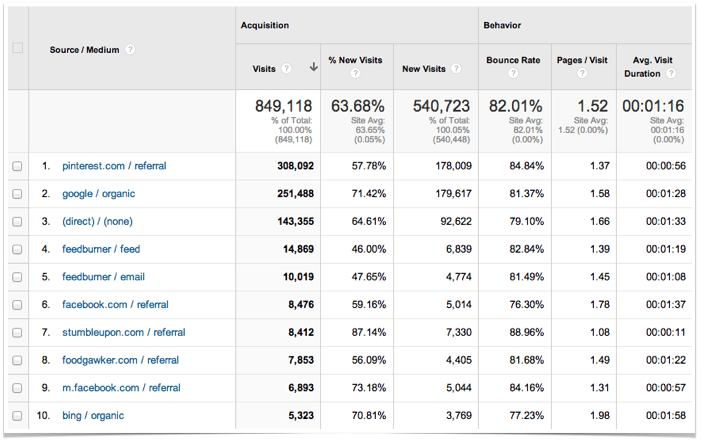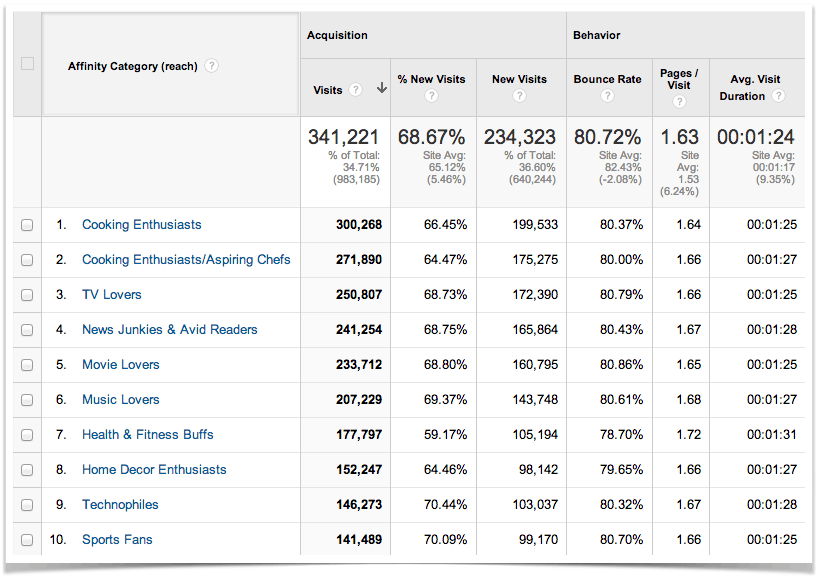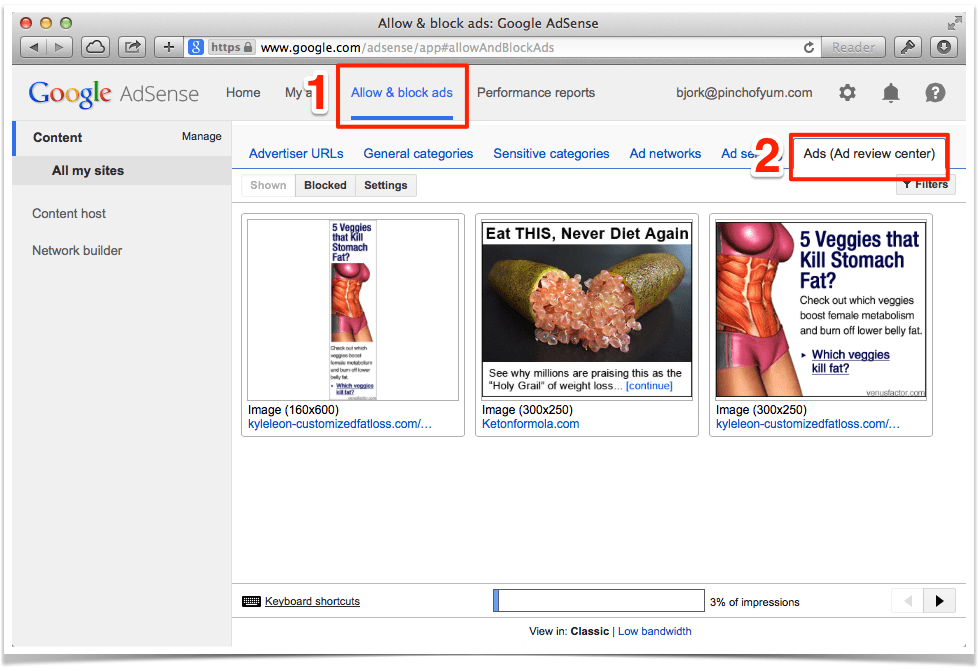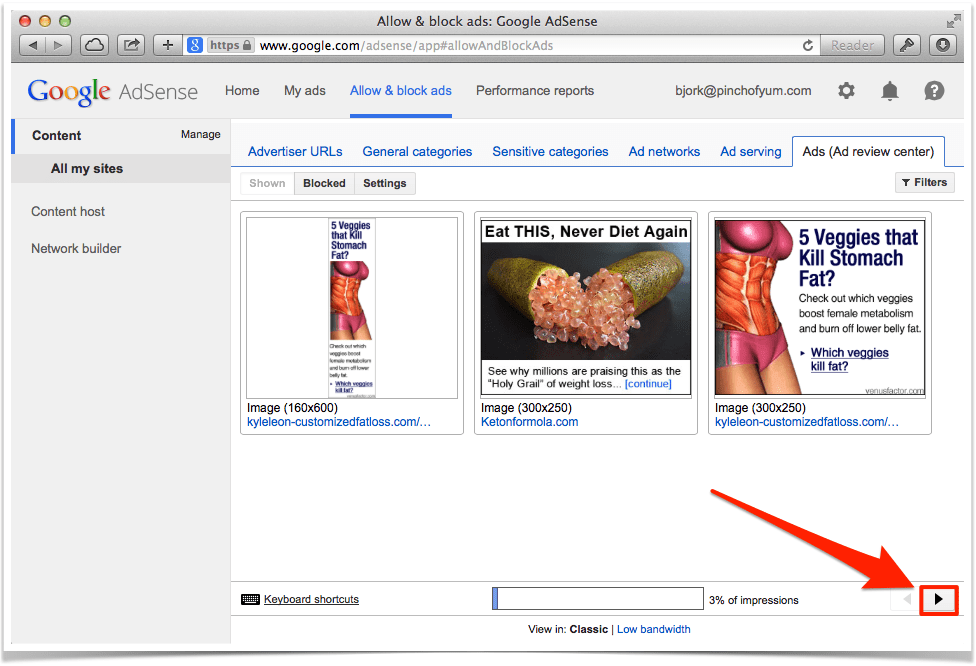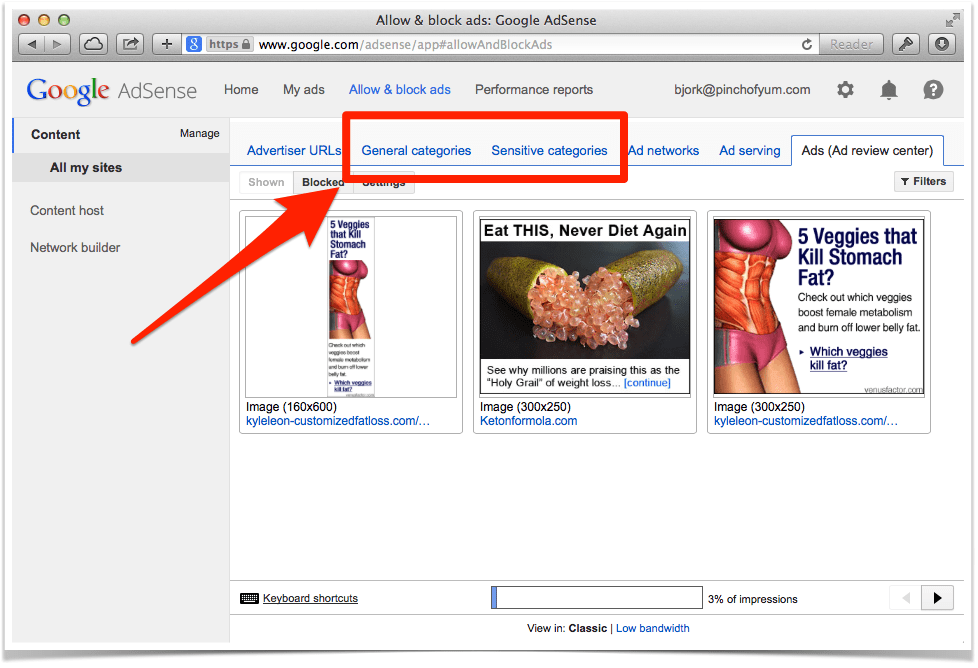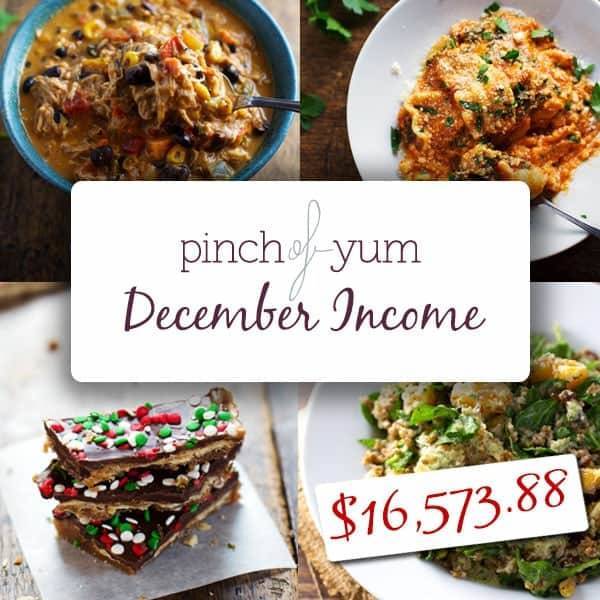
Yo! Bjork here, checking in for my monthly traffic and income report.
I focus on two things with these reports (1) the income and expenses and (2) the traffic. I also include any tips or tricks that we’re learning as we continue to find ways to grow the blog. Creating an income from a blog or website isn’t something that happens overnight (or even after a few months). It’s taken Pinch of Yum a long time to get to this point…hours upon hour (upon hours).
If you’ve read any of the previous traffic and income reports then you’re probably familiar with my thoughts on the time, energy, and work involved with building a blog. In last month’s report, I mentioned the struggle that Lindsay and I face with always working. More recently, Lindsay posted on burnout and peace, where she reflected on “working through that thing called burnout.”
Why do I always mention something about how much work goes into building a blog in these reports?
Good question, thanks for asking.
I’m intentional about mentioning this because it helps provide context around these numbers that we’re sharing. For instance, Lindsay shared at the end of this post that she logged over 13 hours from the time she first started working on it to the time she pressed publish. Yoiks! That’s a lot of time for one post. But here’s the thing – it’s not abnormal for Lindsay to spend 6-8 hours on every post by the time the recipe is tested, the food photographed, the post written, and the content edited. With 3 posts a week that means 18-24 hours a week on just the posts. That doesn’t include responding to emails, social media, fixing computer problems, communicating with sponsors or going for long walks on the beach around a frozen lake with her husband.
In short, both Lindsay and I want to communicate that earning substantial income from a blog is possible while also giving a realistic look at what it takes to get there.
With that in mind, let’s jump into the numbers for December.
Income
- BlogHer (now SheKnows) – $4,414.01
- Sponsored Content – $3,500
- Tasty Food Photography – $3,053.00
- Swoop (BlogHer) – $1,914.41
- Google AdSense – $1,628.29
- Bluehost – $1,625.00
- Lijit – Federated Media – $1,587.07
- Ziplist – $1,276.19
- The Creamy Cauliflower Sauce eCookbook – $472.50
- Genesis Theme – $284.30
- Thesis Theme – $28.71
- Foodie Theme – $27.00
- Elegant Themes – $19.50
Total Income:: $19,829.98
Expenses
- Media Temple (Hosting) – $750.00
- Food Expenses- $570.25
- eBook Affiliates – $501.00
- Amazon S3 and Cloudfront – $328.72
- Food Props/Storage – $263.83
- PayPal Transaction Percentage – $185.61
- Support Staff – $180.23
- Bookkeeping – $165.00
- Sucuri – $89.99
- Adobe Creative Cloud – $53.55
- PayPal Website Payments Pro – $30.00
- ViralTag – $28.00
- QuickBooks – $26.95
- Treehouse – $25.00
- Time Doctor – $19.98
- VaultPress – $15.00
- E-Junkie – $15.00
- Rafflecopter – $7.99
Total Expenses: $3,256.10
Net Profit: $16,573.88
If you’re interested in learning more about some of the ways that you can monetize a food blog, we encourage you to download this free ebook, “16 Ways to Monetize Your Food Blog,” from our sister site, Food Blogger Pro!
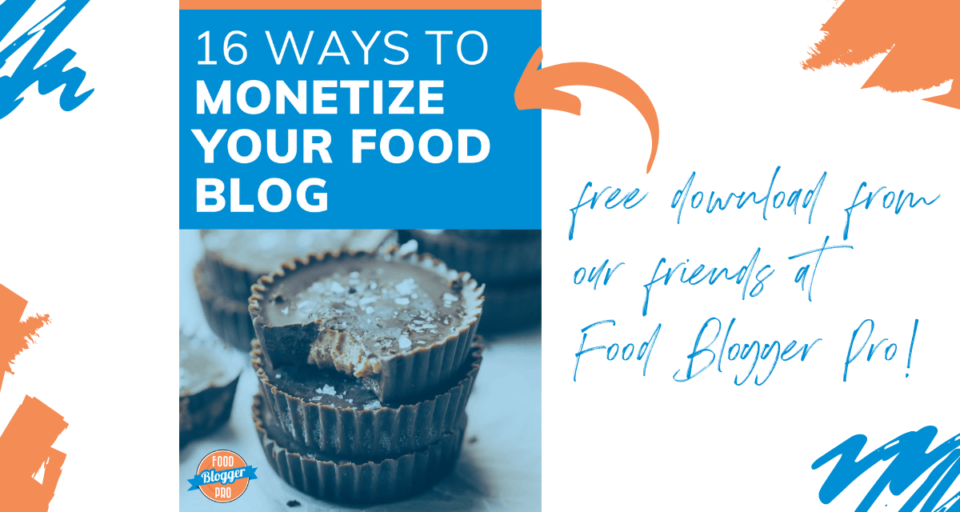
Thoughts On Income
BlogHer
December was another low month for BlogHer when compared to September and October numbers. It’s a major bummer, albeit an expected major bummer, as the advertising industry is known to have huge swings that correlate with the retail calendar. We can always expect January to be a low month in terms of advertising income, but I was a bit surprised that December was also a low month.
As mentioned in last month’s report, we decided to leverage AdSense a bit more on the blog. This change was made by updating our BlogHer ad code so AdSense ads would show if BlogHer didn’t have any ads to show. It looks like that decision will yield $1,000 a month more in AdSense income with our current traffic, which is great!
NOTE:
We recently received an email from BlogHer informing us that using third party backup ad code is something they no longer allow. They’ve grandfathered in those that used it before, but new BlogHer applications must use BlogHer’s default ad code, called PubMatic.
One of the disadvantages with more AdSense ads was an increase in low-quality ads. Do recognize this lovely lady?
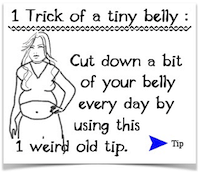
The ad might have a decent CPC, but it looks incredibly…how do I say it…crappy?
Whenever I see these type of ads pop up I go into AdSense and block them. I’ll share how I do that at the end of this post.
Are Ads Worth It, and If So, When Do I Install Them?
I’ve noticed a few different conversations, on Facebook and the Food Blogger Pro community forum, about whether or not ads are worth having on a site, and if so, when to put them on. It’s a good question and one that I wanted to talk about here in this post.
If you’re looking to create an income from your food blog I’d suggest putting advertising code on your site as soon as possible. I understand that this hurts the user experience and can slow down the load time of your site, but it’s important to understand how advertising works and to experiment with ad code and different advertising networks when your blog is just getting started.
The long term ideal for any website is to become a self-sustaining site, or in other words, to create “in-house” products and services that are sold under the branding of the blog or website. You the blogger then have complete control of the pricing, the promotion, and overall success of the product. When you have your own product or service, your raise becomes effective when you do. However, the reality for most bloggers is that it’s a struggle just to create the content for the blog, let alone create products and service that can be sold to readers.
Thus the need for advertising.
When running ads from an ad network there are two general categories: CPM and CPC.
- CPM = You’re getting paid based on how many time someone sees an ad. An example of a CPM based advertising company is BlogHer. Learn more about CPM on Wikipedia.
- CPC = You’re paid every time that someone clicks on an ad. An example of a CPC based advertising company is Google AdSense. Learn more about CPC on Wikipedia
Food blogs aren’t the best place to run CPC based ads because the payout on those ads is traditionally pretty low. Plus, in order to perform well, CPC ads usually need to be where people are looking, which means within the blog post content or close to your menu bar. This results in a less than ideal reading experience. For a food blog, CPC ad code should be used in places where CPM based ads can’t be used (for instance, as backup ad code).
CPM based advertising is better for a food blog, as the ads can be tucked away in the sidebar, header, or footer (depending on the rules of the ad network). You get paid based on views, not clicks, so you don’t have to worry about placing the ads in annoying places where they are more likely to get clicked.
But the issue with CPM ads on a new blog is that you don’t get many views, which means you don’t get much income. So what should you do if you’re just getting started with your food blog? Here’s what I’d suggest:
- Start your blog
- Create some content (20-30 posts)
- Install CPM based ad code (you first need to get accepted to a CPM network, if you aren’t accepted to any networks, move on to number 4)
- Install CPC based ad code where you can’t use CPM based ads (or if you haven’t been accepted to a CPM based network yet)
- Work on creating awesome recipes with high-quality photos
- If you finish your high-quality content for the week, spend time working on a product that you can eventually offer your readers
Steps 5 and 6 should be repeated over, and over, and over…
You should also implement affiliate marketing throughout your food blog, but that’s a topic for another post.
In short, advertising is an important element for creating an income from a food blog and should be added to your site sooner rather than later, but if you’re interested in your blog becoming a business you need to create a product that you can offer in addition to advertising.
Traffic
Below are some screenshots from Google Analytics. You can click on these screenshots to view a larger image.
Traffic Overview
Top Ten Traffic Sources
Mobile Vs. Desktop Traffic
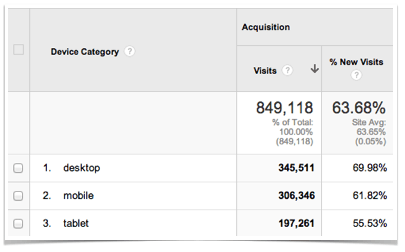
Thoughts On Traffic
December was the first time in the last few months that Pinch of Yum dipped below 900,000 visits in a month. It’s not a great feeling to have a down month in traffic, but we try and keep our outlook on the blog in the 1-2 year range, not the 1-2 month range. If there is a dip compared to a month ago, that’s okay, if there’s a dip compared to a year ago, that’s something to be concerned with.
Google Analytics – Demographics and Interest Reporting
We recently implemented demographics and interest reporting on Google Analytics. Here are a few screenshots of some of the data it provides.
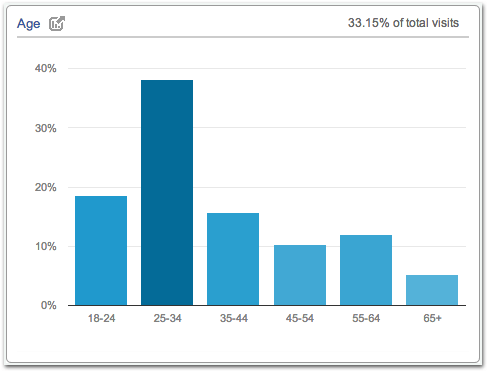
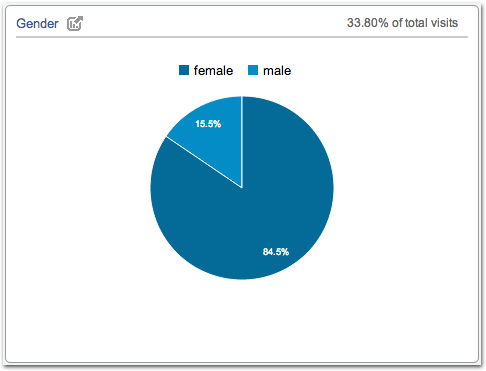
The data provided in the demographics and interest areas of Google Analytics would be helpful for anyone that is brainstorming products to create, looking to provide reader details to sponsors, or just trying to understand their audience better. Even if you don’t think you need it right now, I’d recommend getting it set up today so you have a decent data set by the time you do need it.
There are two things you need to do in order to get access to this information in Google Analytics:
- Update your Google Analytics code. Click here for Google’s instructions on how to do that.
- Update your blog’s Privacy Policy. Here’s the snippet that we added to POY’s privacy policy:www.pinchofyum.com uses Google Analytics Demographics and Interest Reporting. Visitors can opt-out of Google Analytics for Display Advertising and customize Google Display Network ads using Google’s Ad Settings page. Users can completely block Google Analytics tracking using Google’s Opt-out browser add-on.
Blocking Low-Quality AdSense Ads
As mentioned at the beginning of this post, we’re using AdSense more throughout the blog as backup ad code when our CPM networks don’t have ads to show.
The increased number of AdSense ads also means an increase in low-quality ads. I’ve been slowly going through our AdSense account and blocking the ads that I feel are low quality or damaging to the Pinch of Yum brand. There are lots of ways to do this, but here’s the process I’ve been using:
1. Login to AdSense, click on “Allow & block ads”, then “Ads (Ad review center)”
2. Hover over the ad you’d like to block, click the triangle next to “Block,” and then select “Block this AdWords account”. (This blocks the entire AdWords account for that company. If you’d like to just block the individual ad you can click on the red “Block” bar at the top of the ad.)
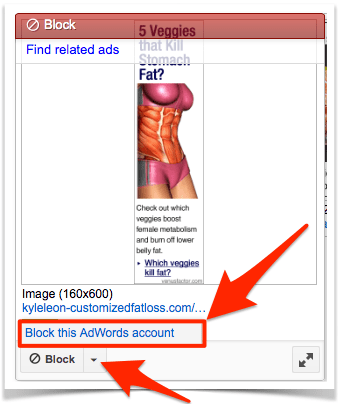
3. Use the arrow in the bottom right to move through the ads.
4. If you’d like, you can block specific categories of ads in the “General categories” or “Sensitive categories” area.
A quick warning: be careful about blocking too many advertisers, as the more companies you block the less competition there will be for your blog’s ad units, which means the less income you’ll earn from AdSense. As always, it has to be a balance between user experience and monetization.
Because Of You
Without you, this thing we call Pinch of Yum wouldn’t exist. Lindsay and I can’t express enough how much we appreciate you following along, commenting, tweeting, and emailing to say hi.
We’re using a portion of this month’s income from Pinch of Yum to support a special project at the Children’s Shelter of Cebu, an orphanage where Lindsay and I lived and worked for a year. The special project we’re supporting this month is new cribs for the orphanage’s infirmary.
One of the most incredible things we got to witness while working at CSC was when children at the shelter met their forever families. In wrapping up this post we wanted to share a video that our awesome friends at Love In Transit made that shows what that experience is like.
As always, thanks for reading.
The post December Traffic and Income Report – $16,573.88 appeared first on Pinch of Yum.


